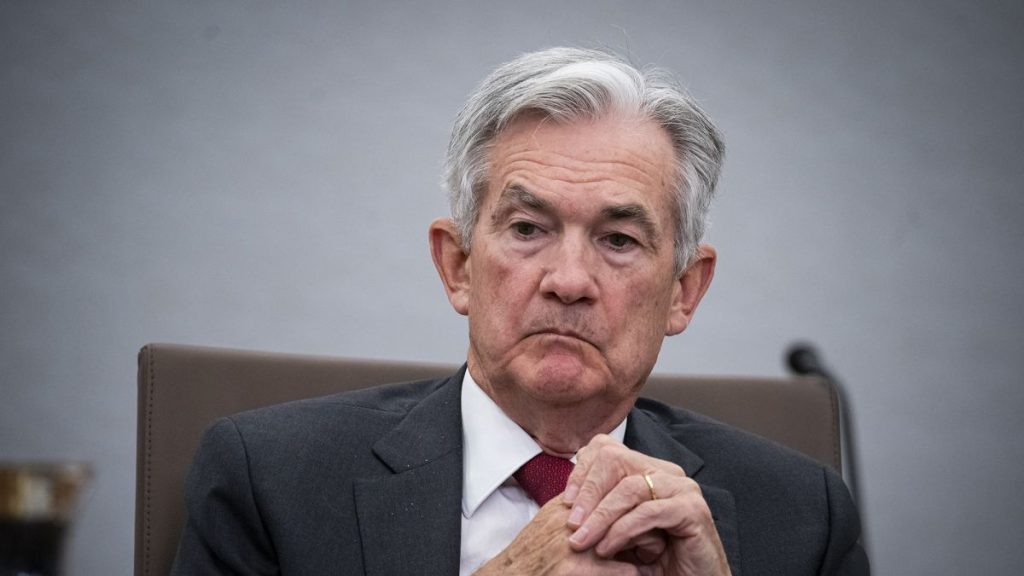Opinion: The Fed doesn’t have a choice anymore. Get ready for a recession | CNN Business

Editor’s Note: Gad Levanon is the chief economist at the Burning Glass Institute. He’s the former head of The Conference Board’s Labor Market Institute. The opinions expressed in this commentary are his own.
To many economists and analysts, the US economy has represented a paradox this year. On the one hand, GDP growth has slowed significantly, and some argue, even entered a recession. On the other hand, overall employment growth has been much stronger than normal.
While GDP declined at an annualized rate of 1.1% in the first half of 2022, the US economy added 2.3 million jobs in the last six months, far more than in any other six-month period in the 20 years prior to the pandemic.
This tight labor market – and the rapid wage growth it has spurred – is causing inflation to become more entrenched. The Consumer Price Index, which measures a basket of goods and services, was 8.3% year-over-year in August. That’s lower than the 40-year high of 9.1% in June, but still painfully high. To address it, the Federal Reserve is likely to drive the economy into a recession in 2023, crushing continued job growth.
Why has employment growth remained so strong? First, the US economy is holding on better than many expected. The Atlanta Fed’s GDPNow estimate for real GDP growth in the third quarter of 2022 is 2.3%, suggesting that while the economy is now growing much more slowly than it did last year, we are still not in a recession. When the demand for goods and services strengthens, so does the demand for workers producing these goods and services.
Second, despite the slowing of the economy and the growing fears of recession, layoffs are still historically low. Initial claims for unemployment insurance, an indicator highly correlated with layoffs, were 219,000 for the week ended October 1 – higher than the week prior, but still one of the lowest readings in recent decades. After years of increasingly traumatic labor shortages, many employers are reluctant to significantly reduce the number of workers even as their businesses are slowing. That’s because companies are worried that they will have trouble recruiting new workers when they start expanding again.
Third, many industries are growing faster than normal because they are still recovering from the pandemic. Convention and trade show organizers, car rental companies, nursing homes and child day care services, among others, are all growing fast because they are still well below pre-pandemic employment levels.
Fourth, just as some industries are growing because they are still catching up, others are experiencing high growth as they adjust to a new normal of higher demand. Demand for data processing and hosting services, semiconductor manufacturing, mental health services, testing laboratories, medical equipment and pharmaceutical manufacturing is higher than before the pandemic. And it’s likely that these represent structural changes to buying patterns that will keep demand high.
Fifth, during the pandemic, corporate investments in software and R&D reached unprecedented levels, which drove a rapid increase in new STEM jobs. Because these workers are especially well paid, they have had plenty of disposable income to spend on goods and services, which has supported job growth throughout the economy.
These factors are spurring positive momentum that will not disappear overnight. Employment growth is likely to slow down from its historically high rates, but it will still remain solid in the coming months. ManpowerGroup’s Employment Outlook Survey shows that the hiring intentions for the fourth quarter are still very high, despite dropping from the previous quarter.
Next year, however, will look very different. Many of the industries that are still recovering from the pandemic will have reached pre-pandemic employment levels. With demand saturated, those industries may revert to slower hiring. But this alone is unlikely to push job growth into negative territory. What will do that is monetary policy.
There are two ways to rein in the labor market: Either reduce demand for workers or increase the labor supply. But it’s hard to engineer a boost in labor supply. That takes the kind of legislative action needed to increase immigration, drive people into the labor force or grow investment in workforce training. This is likely to prove elusive in today’s polarized political environment.
The only option that leaves the Fed is to engineer a recession by continuing to raise interest rates. Expect to see that happen in 2023.







